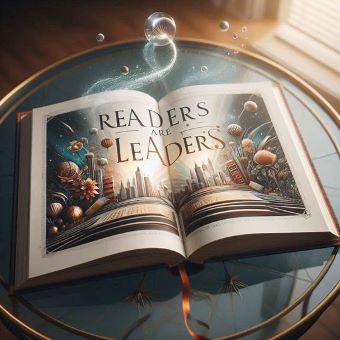Jingle Bells and History Wells: The Fascinating Story of Christmas
Was Jesus Really Born on Christmas?
December 25 has finally arrived, marking another festive Christmas celebration for millions around the world.
As we exchange gifts, share meals with loved ones, and revel in the holiday spirit,
have you ever stopped to think about the rich history behind this beloved holiday?
Despite its widespread observance, the origins and evolution of Christmas remain a mystery to many.
In this article, we’ll embark on a journey to uncover the fascinating story of Christmas,
exploring its ancient roots, cultural significance, and transformation over time.
Jingle Bells and History Wells: The Fascinating Story of Christmas
The Winter Solstice and the Origins of Christmas
The winter solstice, which typically falls on December 21 or 22 in the Northern Hemisphere, has a significant connection to the history of Christmas.
In fact, the winter solstice played a crucial role in shaping the traditions and celebrations that eventually became Christmas.
Pre-Christian Winter Solstice Celebrations
In ancient Europe, the winter solstice was celebrated with festivals and rituals to mark the longest night of the year and the beginning of the lengthening of days.
These festivals often involved the lighting of fires, feasting, and merriment.
The ancient Romans, for example, celebrated Saturnalia, a festival in honour of Saturn, the god of agriculture, from December 17 to 23.
This festival involved feasting, gift-giving, and role-reversals, where masters served their slaves.
Jingle Bells and History Wells: The Fascinating Story of Christmas
The Christianization of the Winter Solstice
As Christianity spread throughout Europe,
the early Christian church attempted to eliminate the existing pagan traditions and customs associated with the winter solstice.
However, instead of eradicating these festivals, the Christian church co-opted them,
incorporating elements of the pagan celebrations into the new Christian holiday of Christmas.
This process of syncretism, where elements of different cultures and traditions are combined,
would shape the development of Christmas into the holiday we know today.
Early Christianity celebrated the Epiphany, which commemorated the visit of the Magi to the baby Jesus, on January 6.
However, in the 4th century, Pope Julius I chose December 25 as the date for celebrating the birth of Jesus,
likely to co-opt the existing pagan festivals and traditions.
Jingle Bells and History Wells: The Fascinating Story of Christmas
Was Jesus Really Born on Christmas?
Despite the widespread celebration of Jesus’ birth on December 25, there is no conclusive evidence to confirm that Jesus was actually born on this date.
In fact, many scholars believe that Jesus may have been born in the spring or fall, rather than in the winter.
The Bible does not provide a specific date for Jesus’ birth,
and many of the early Christian traditions and customs surrounding Christmas were likely influenced by existing pagan festivals and celebrations.
Some scholars point to the fact that the shepherds mentioned in the Gospel of Luke were still tending their flocks in the fields,
suggesting that Jesus may have been born during a warmer time of year.
Others argue that the Roman census mentioned in the Gospel of Luke would have taken place during the spring or fall, rather than in the winter.
Ultimately, the exact date of Jesus’ birth remains a mystery,
and the celebration of Christmas on December 25 has become a tradition that is deeply ingrained in Western culture.
The Middle Ages and the Emergence of Modern Christmas Traditions
During the Middle Ages, Christmas became a more widespread and popular holiday.
The Catholic Church established Christmas as a holy day of obligation,
and the holiday became a time for feasting, singing, and merriment.
Many of the modern Christmas traditions we know today, such as decorating trees, exchanging gifts, and singing carols, emerged during this period.
The tradition of gift-giving, for example, is believed to have originated with the Magi’s gifts of gold, frankincense, and myrrh to the baby Jesus.
The Victorian Era and the Popularization of Christmas
The Victorian era saw a significant transformation in the way Christmas was celebrated.
Prince Albert, the German-born husband of Queen Victoria, introduced the tradition of decorating Christmas trees to the British court.
The Illustrated London News published an image of the royal family celebrating around a decorated Christmas tree in 1848,
popularizing the tradition among the British middle class.
Jingle Bells and History Wells: The Fascinating Story of Christmas
The American Celebration of Christmas
Christmas was not widely celebrated in early America, particularly among the Puritan communities of New England.
However, as German and Dutch immigrants arrived in the United States, they brought their Christmas traditions with them.
The celebration of Christmas gained popularity in the United States during the 19th century,
thanks in part to the efforts of writers like Washington Irving and Clement Clarke Moore.
Irving’s book, “The History of New York,” included a description of a festive Christmas dinner, while Moore’s poem,
“A Visit from St. Nicholas” (also known as “The Night Before Christmas”), helped popularize the idea of Santa Claus as a jolly, gift-giving figure.
The Modern Celebration of Christmas
Today, Christmas is celebrated by people of many different cultures and faiths around the world.
While the holiday retains many of its traditional elements, such as decorating trees and exchanging gifts,
it has also evolved to incorporate new customs and practices.
In many countries, Christmas is a time for family gatherings, feasting, and merriment.
In conclusion, Christmas is a holiday with a rich and complex history spanning centuries and cultures.
From its humble beginnings as a pagan festival to its modern-day celebration,
Christmas has evolved into a holiday that is both deeply personal and widely cultural.
Whether you celebrate Christmas as a time of spiritual reflection, a time for family and friends,
or simply as a time for festive fun, the holiday remains a powerful symbol of hope, joy and generosity.
So, while you celebrate it, remember its deeper significance and the values it represents—Love, Kindness, Compassion and Forgiveness.
With this understanding, the true essence of Christmas will be accomplished.
Merry Christmas to you!
Also Read: The Christmas Greenery Story – Diademng
Jingle Bells and History Wells: The Fascinating Story of Christmas

















Happy Christmas!
Your writing has a way of resonating with me on a deep level. It’s clear that you put a lot of thought and effort into each piece, and it certainly doesn’t go unnoticed.
Hello my loved one I want to say that this post is amazing great written and include almost all significant infos I would like to look extra posts like this
Noodlemagazine I just like the helpful information you provide in your articles